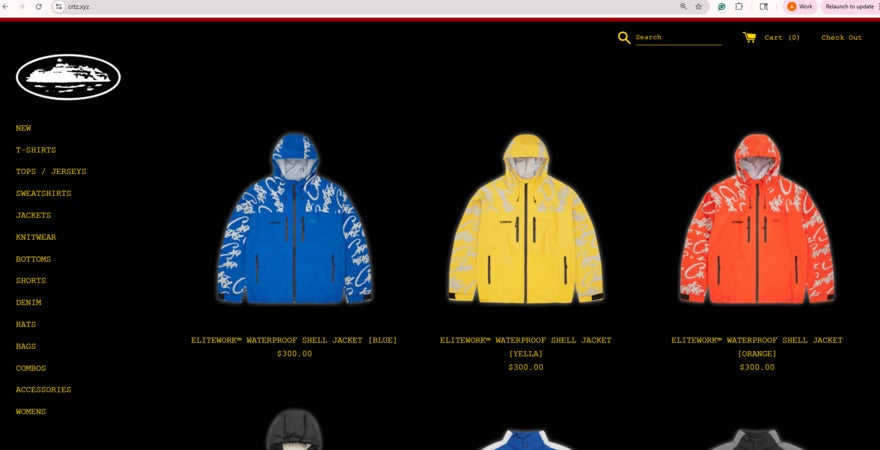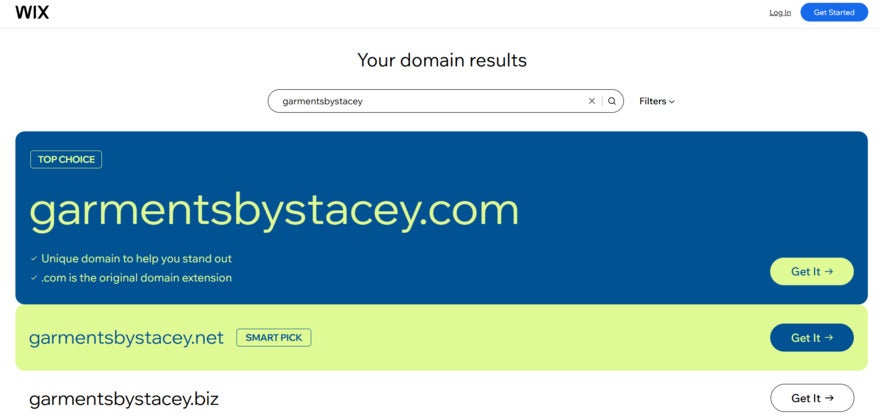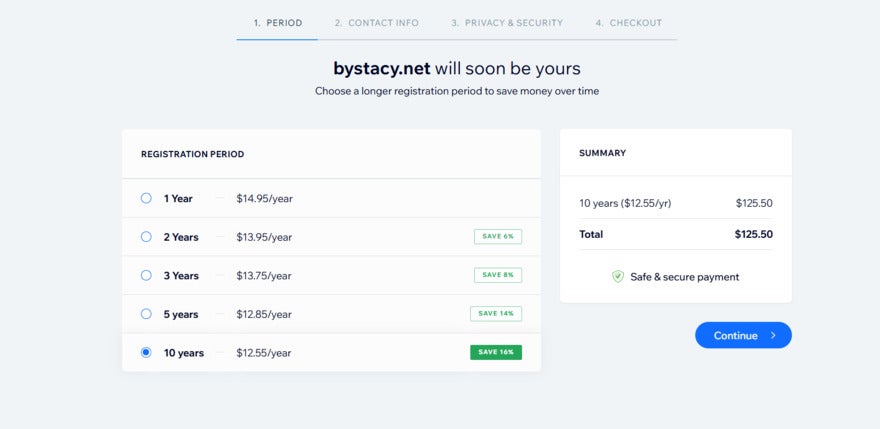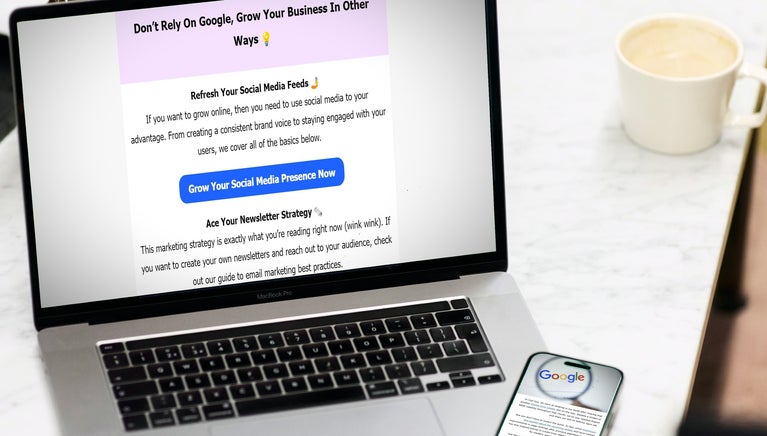How To Choose and Register a Top-Level Domain for Your Business
We may receive a commission from our partners if you click on a link and purchase a product or service on their website. Learn more
Securing a domain name is an exciting step in your website journey. An important part of this process is choosing a top-level domain (TLD) that accurately represents your website.
But with over 1,500 top-level domains to choose from, it can be an overwhelming decision. Below, I’ll explain how to choose a top-level domain that suits your business and audience’s needs, and lay out the steps to register it to your website.
Key Takeaways 🔍
- TLDs tell users and Google important information about your business
- When choosing a TLD, consider your industry, location, site type, and target audience
- General TLDs cost between $10 and $20 per year
- The process of changing a TLD is technical, timely, and can hurt your brand image
While general TLDs typically cost between $10 and $20 per year, with Wix you get your first year free when you purchase any premium website builder plan – making it easier to launch with a recognized domain extension.
What Is a Top-Level Domain?
A top-level domain (TLD), also known as a domain extension, is the last section of a domain name that comes after the final dot. For instance, our domain name is websitebuilderexpert.com, therefore our TLD is .com.
A TLD can distinguish your location and site type, and is also used to differentiate between two sites with the same second-level domain.
➡️Stuck choosing your domain name? Check out our full guide.
What Are the Most Popular TLDs?
.com is the most popular, longstanding, and widely recognized TLD. For these reasons, .com is often the preferable option for most websites looking to gain trust.
Other popular TLDs include:
- .net – a common choice for tech companies
- .org – widely used by charities and nonprofit organizations
- .co – short for “company,” this is a popular option for business websites
- .edu – used by educational institutions, such as colleges and universities
- .us – a location-based TLD that signals a company operates in the United States

Why Does Your TLD Matter?
Choosing a well known TLD that’s reflective of your business is vital if you want your site visitors to trust your website. Any confusion can be enough to turn your visitors to a competitor.
For instance, if a website selling eyewear – glasses.com – decided to switch to .net, it may be perceived as a tech company rather than an ecommerce business.
Your TLD also makes it easier for users to find you online. If your brand shouts about being local to the United States, for instance, users would likely search .us or .com. And if you have the wrong location TLD, they may disregard your site altogether.
Choosing Your TLD: 4 Factors To Consider
When considering which top-level domain to use, be open to options outside of .com. While this is the most popular TLD, its demand means it’s often taken. However, there are plenty of alternatives that some websites will benefit more from.
To choose your TLD, consider these four factors:
1. Your Site’s Purpose
There are TLDs for almost any website purpose and business type. By choosing one that accurately represents your business, you’ll tell people what to expect from your site before they visit it. For instance:
- .shop, .store, and .site instantly tell visitors that they can purchase goods on your website
- .org or .charity represent charitable organizations
- .travel nods towards any business in the tourism industry
2. Your Target Audience
While there are a plethora of industry and location-based TLDs to choose from, .com or .net will be a better choice for businesses with a diverse audience since they’re widely recognized.
Older users are also less likely to recognize new and trendy TLDs. On the other hand, a unique TLD, such as .xyz will be appreciated by a Gen Z audience and help to differentiate your brand from the competition.

When learning how to choose a top-level domain, remember that the ultimate goal is to be seen as memorable and trustworthy by your target audience.
3. Your Location
If you sell to one market in particular, you should consider using a country code TLD (ccTLD), such as .us (United States) or .nz (New Zealand). There are over 200 ccTLDs to choose from, meaning your preference is likely to be available.
A ccTLD makes your site instantly familiar to your local site visitors, and they will be inclined to trust that your costs and order fulfillment times will work in their favor.
City based ccTLDs, such as .paris, hone in on your location even further. If your site supports a brick and mortar store or offers click and collect, this is a great way to support your local SEO.
However, it’s best to avoid this option if you plan to expand to new global markets at any point in the future, since this can cause confusion. While possible, the process of changing your domain name later is technical and damages brand awareness.
4. Your Domain Name Budget
Your TLD plays a part in the final cost of your domain name. Generic domains, such as .com, .net, and .org, range from $12 to $20 per year. Newer TLDs tend to have a much more variable cost. At my time of writing, annual registration pricing is $50.90 for .bio, $271.70 for .feedback, and .security even hit $1,830.
With Wix, you can access over 86 domain extensions including popular, unique and location-based TLDs, with transparent pricing and a free first year included in your site plan.
How To Find a Top-Level Domain
Wix’s AI-powered domain search makes it easy to choose the best available TLD for your business, offering top recommendations and smart alternatives based on your brand and audience—all within an intuitive interface that guides your selection.

If you’re set on a specific TLD, Wix’s domain search also lets you apply a TLD filter, and shows you closely matched domain names that are available with your chosen TLD.
Once You’ve Chosen: How To Secure Your TLD
You should register your top-level domain as soon as possible while it’s still available. Luckily, this can be done in three easy steps:
1. Choose Your Domain Registrar
There are plenty of domain name registrars to choose from. Since domain name prices vary between registrars, it’s a good idea to shop around for the best deal.
You can also buy a domain name through some website builders, which is often the easiest solution with the best deals. Wix, a leading website builder and domain registrar, gives you a custom domain for free in your first year with any website builder plan – combining seamless website creation, domain registration, and easy ongoing management in one platform.

2. Select Your Domain Name and TLD
In your chosen domain registrar’s search bar, search for your available domain name. Most domain registrars will let you type the full domain name and TLD, but you may need to add the TLD as a filter.
If you’re using a website builder, refer to the section above, where I’ve already covered how to search for a domain on Wix.
Select your preferred domain name and TLD from the list of results to purchase it.
3. Complete Your Purchase
Once you select your domain, you’ll need to choose how long you want to register your domain for. You’ll save money by paying for a longer time period, but keep in mind that you will have to pay the full cost up front.
If you opt for Wix’s domain search, you’ll be asked to choose whether you want to purchase the domain separately or get it for free with a website builder plan.

To complete the purchase, add your contact information and choose security add-ons, such as whether you want to register privately or add Domain Name System Security Extensions (DNSSEC). These are optional and incur an additional fee, but help secure your domain against fraud.
Wix offers free WHOIS privacy with every domain, advanced security features, and the option to register for up to 10 years – giving you greater flexibility and peace of mind.
Ready To Choose Your TLD?
If you’re stuck wondering “What top-level domain should I use?,” use this information to guide your decision. Primarily, choose the option that your site visitors will trust, remember, and understand, while remaining on-budget.
If you’re a local business, a ccTLD is a great way to show where you’re based. Or consider using a TLD list that nods to your industry or site’s purpose, but be aware that these can be more expensive.
Use a domain registrar to find the best available option to link to your website. I recommend Wix, since it provides guidance on which domain to choose and has an easy registration process.


Leave a comment